


Hello everyone!
I am Silverman43 and welcome to my
 Maokai
Maokai guide. He has been my favorite champion since I started playing LoL during season 7. In this guide I will teach you everything about our favorite tree on the rift
 Ivern
Ivern Maokai
Maokai in his 3 most common roles: Toplane, Jungle & Support.

Some abbreviations I use in this guide:
-AD=Attack Damage
-AP=Ability Power
-AS=Attack Speed
-MR=Magic Resist
-MS=Movement Speed
-HP=Health Points
-AoE=Area of Effect
-AA=Auto Attack
-CC=Crowd Control (Stuns, roots, slows, fears...)
-CDR=Cooldown Reduction
-OOM=Out Of Mana
This was my first guide here on Mobafire and although it has been out for a few years, there is still room to improve this guide, so leave your ideas in the comments!
I also want to apologize in advance for my English, as I'm a non-native English speaker so there are possibly still some errors in this guide.
Small Note:
The images used in this guide portray the old summoners rift, without alcoves. I haven't found an image of the updated map yet. But IMO the alcoves have almost no impact on the game so there won't be any reference to them (yet) in this guide. I hope you understand.
8/1/2019 - Mobafire Season 9 Contest Winner & 21/1/2020 - Mobafire Season 10 Contest Winner!
I can't express how thankful I am for this. I want to thank the fantastic Mobafire community for this honor. Let's make this guide even better!

|
|
|
|
+ High Sustain with  Sap Magic Sap Magic |
- Weak early game |
|
+ Really tanky |
- Relies on his team to deal damage |
+ Free Vision with  Sapling Toss Sapling Toss |
- High mana costs |
|
+ Heavy CC for both engaging and peeling |
- Hard to play when behind |
|
+ Great Late Game |
- Slow movement and little mobility |
|
+ Easy to pick up |
|

 Flash
Flash
| |
|
The best offensive and the best defensive spell in one. It's a get out of jail spell, or an extra gap closer when you need to chase a low-health target.  Flash is mandatory on almost every champion and Flash is mandatory on almost every champion and  Maokai is no exception, no matter which role you play. Maokai is no exception, no matter which role you play. | |
 Teleport
Teleport
| |
|
When playing toplane, this will always be your 2nd summonerspell besides  Flash. Use it to get back to your lane fast, or teleportgank bot, which is very strong with Flash. Use it to get back to your lane fast, or teleportgank bot, which is very strong with  Maokai's CC. A nice bonus is the extra movement speed you'll get when you arrive. Maokai's CC. A nice bonus is the extra movement speed you'll get when you arrive. | |
 Smite
Smite
| |
|
Always take this when jungling. You need it to be able to buy jungle items and you can cast it on monsters to deal some true damage (depending on level) and restore some health. When you upgrade your jungle item into either  Stalker's Blade or Stalker's Blade or  Skirmisher's Sabre you can also cast Skirmisher's Sabre you can also cast  Smite on enemy champions, stealing MS or dealing extra true damage to them while reducing their damage to you respectively. Smite on enemy champions, stealing MS or dealing extra true damage to them while reducing their damage to you respectively. | |
 Ignite
Ignite
| |
|
The best choice when you play support. The free true damage helps getting some early kills. It's a good choice when you play with a strong early ADC, like  Lucian or Lucian or  Draven. Draven.  Ignite also inflicts grievous wounds, what means it's a great choice against healing supports like Ignite also inflicts grievous wounds, what means it's a great choice against healing supports like  Nami or Nami or  Sona, as grievous wounds reduce healing effects. Sona, as grievous wounds reduce healing effects. | |
 Exhaust
Exhaust
| |
|
Target an enemy champion to slow them and reduce their damage for 2.5s. Only take this when you play support in certain cases. This might be when the enemy botlane has high kill pressure, like a  Lucian - Lucian -  Alistar botlane who are strong early and are able to go all-in pre-6. Alistar botlane who are strong early and are able to go all-in pre-6.  Exhaust might also be a good idea if the enemy team has high burst damage threats like a Exhaust might also be a good idea if the enemy team has high burst damage threats like a  Zed mid and a Zed mid and a  Kha'Zix jungle for example. But overall, Kha'Zix jungle for example. But overall,  Ignite is in a better spot than Ignite is in a better spot than  Exhaust and should be your second summoner spell in most games. Exhaust and should be your second summoner spell in most games. | |

In my opinion, the best main rune path for
 Maokai
Maokai is
 Resolve
Resolve. It's the best path for tanks. If you prefer other rune setups, go ahead. In the end it all comes down on personal preference and playstyle.


|
|
 Aftershock is the best choice of keystone in most cases. It gives you extra armor and MR for 2,5s and deals damage after you immobilize an enemy. Both Aftershock is the best choice of keystone in most cases. It gives you extra armor and MR for 2,5s and deals damage after you immobilize an enemy. Both  Twisted Advance and Twisted Advance and  Nature's Grasp root the enemy so this Rune will get activated very often. It even gets activated by the knockback of Nature's Grasp root the enemy so this Rune will get activated very often. It even gets activated by the knockback of  Bramble Smash. It's quite bursty, so the best choice for ganks, all-ins or short trades. That's why it is mandatory as jungler, support or as a toplaner against ranged opponents. Bramble Smash. It's quite bursty, so the best choice for ganks, all-ins or short trades. That's why it is mandatory as jungler, support or as a toplaner against ranged opponents.
|


|
|
 Grasp of the Undying empowers your first basic attack every 4 seconds in combat. Auto attacking an enemy champion deals bonus damage equal to a percentage of your max HP, heal you AND permanently increases your HP with 5. A decent keystone on Grasp of the Undying empowers your first basic attack every 4 seconds in combat. Auto attacking an enemy champion deals bonus damage equal to a percentage of your max HP, heal you AND permanently increases your HP with 5. A decent keystone on  Maokai, as its healing synergizes nicely with Maokai, as its healing synergizes nicely with  Sap Magic. And you already need to AA often for your passive, so Sap Magic. And you already need to AA often for your passive, so  Grasp of the Undying fits Grasp of the Undying fits  Maokai really well. The only downside is that you will have to be in combat constantly, while also being able to auto attack the enemy frequently. This means it's only a good option for toplane against melee opponents. As a jungler you won't be in combat enough and vs ranged opponents you won't be able to auto attack enough. (Both for ranged tops and botlane.) Maokai really well. The only downside is that you will have to be in combat constantly, while also being able to auto attack the enemy frequently. This means it's only a good option for toplane against melee opponents. As a jungler you won't be in combat enough and vs ranged opponents you won't be able to auto attack enough. (Both for ranged tops and botlane.)
|


|
|
My first choice of minor rune is  Font of Life. Font of Life.  Demolish doesn't fit Demolish doesn't fit  Maokai's playstyle and Maokai's playstyle and  Shield Bash doesn't work due to Shield Bash doesn't work due to  Maokai' lack of shields, so Maokai' lack of shields, so  Font of Life is the only viable option. And it's actually good. It gets activated by rooting someone and allies can heal for a percentage of your max HP by attacking those immobilized enemies. The heal even synergizes with Font of Life is the only viable option. And it's actually good. It gets activated by rooting someone and allies can heal for a percentage of your max HP by attacking those immobilized enemies. The heal even synergizes with  Revitalize. Revitalize.
|


|
|
Our next rune  Conditioning doesn't look very spectacular, as it only gives flat armor and magic resist. But besides the 9 bonus armor and MR, it also increases our total armor and MR by 5%. You will almost always build full tank on Conditioning doesn't look very spectacular, as it only gives flat armor and magic resist. But besides the 9 bonus armor and MR, it also increases our total armor and MR by 5%. You will almost always build full tank on  Maokai, so this helps a lot. Maokai, so this helps a lot.
|

|
|
 Bone Plating can be taken instead of Bone Plating can be taken instead of  Conditioning in some situations. Every once in a while it reduces the damage you'll take from the next incoming spells or attacks after taking damage. Nice to have, but the long cooldown makes it at its best in bursty playstyles. This means it's the best choice for support Conditioning in some situations. Every once in a while it reduces the damage you'll take from the next incoming spells or attacks after taking damage. Nice to have, but the long cooldown makes it at its best in bursty playstyles. This means it's the best choice for support  Maokai, as it is great for all-ins and it's stronger during the laning phase than Maokai, as it is great for all-ins and it's stronger during the laning phase than  Conditioning, which is quite important for a support. Conditioning, which is quite important for a support.
|


|
|
 Revitalize boosts heals and shields with 5%, increasing with 10% when below 40% HP, so this synergizes with Revitalize boosts heals and shields with 5%, increasing with 10% when below 40% HP, so this synergizes with  Sap Magic. Combine this with Sap Magic. Combine this with  Spirit Visage and Spirit Visage and  Maokai becomes an unkillable raidboss! It's even better when you have teammates with heals/shields like Maokai becomes an unkillable raidboss! It's even better when you have teammates with heals/shields like  Soraka, Soraka,  Janna or Janna or  Lulu. Lulu.
|

|
|
while  Revitalize is good during any stage of the game, Revitalize is good during any stage of the game,  Overgrowth is more of a scaling rune. It grants extra max HP for each monster or enemy minion that dies near you. At 120 absorbed enemies, you'll gain another additional 3.5% max HP. It makes you tankier and increases Overgrowth is more of a scaling rune. It grants extra max HP for each monster or enemy minion that dies near you. At 120 absorbed enemies, you'll gain another additional 3.5% max HP. It makes you tankier and increases  Sap Magic healing. The biggest downside is that it requires a lot of time to really benefit from it, giving Sap Magic healing. The biggest downside is that it requires a lot of time to really benefit from it, giving  Revitalize often the edge over it. Revitalize often the edge over it.
|

My favorite secondary rune path for toplane
 Maokai
Maokai is sorcery. It helps a lot with scaling even harder, which is great for a late game monster like
 Maokai
Maokai.


|
|
The first  Sorcery Rune I use is Sorcery Rune I use is  Manaflow Band. It gives 25 max mana after hitting a champion with an ability, until 250. Once you got the maximum amount of bonus mana, you'll also regain some of your mana every few seconds. I use this to counter my early game mana struggles in cases where you can't rush a mana item. Or just to spam my abilities more often. Manaflow Band. It gives 25 max mana after hitting a champion with an ability, until 250. Once you got the maximum amount of bonus mana, you'll also regain some of your mana every few seconds. I use this to counter my early game mana struggles in cases where you can't rush a mana item. Or just to spam my abilities more often.
|

|
|
An alternative for  Manaflow Band is Manaflow Band is  Gathering Storm. It gives you a huge AP boost over the course of the game. Even though Gathering Storm. It gives you a huge AP boost over the course of the game. Even though  Maokai doesn't scale that well with AP, it can give you an significant advantage late game, especially because it's free. Take this if you want to fully focus on late game. Maokai doesn't scale that well with AP, it can give you an significant advantage late game, especially because it's free. Take this if you want to fully focus on late game.
|


|
|
 Transcendence gives Transcendence gives  Maokai 10% CDR once you reach level 10. Additionally, any excessive CDR you have gets converted into AP. Maokai 10% CDR once you reach level 10. Additionally, any excessive CDR you have gets converted into AP.  Maokai heavily benefits from CDR (casting abilities more often, so more frequent Maokai heavily benefits from CDR (casting abilities more often, so more frequent  Sap Magic use), so you can't really go wrong with this one, especially because CDR doesn't always fit in Sap Magic use), so you can't really go wrong with this one, especially because CDR doesn't always fit in  Maokai's build. Maokai's build.
|

Another good secondary rune path on
 Maokai
Maokai is
 Domination
Domination. It contains some burst-oriented runes that synergize well with
 Maokai
Maokai's kit and aggressive jungle or support playstyles.


|
|
This rune is fantastic. It's possibly the single best rune on  Maokai. After impairing the movement of an enemy champion, the next damage you deal to them will contain some bonus true damage. Due to Maokai. After impairing the movement of an enemy champion, the next damage you deal to them will contain some bonus true damage. Due to  Maokai's insane amounts of CC, this rune can be activated really often, also thanks to the really short cooldown. But the best thing is that brush empowered Maokai's insane amounts of CC, this rune can be activated really often, also thanks to the really short cooldown. But the best thing is that brush empowered  Sapling Toss activates it by itself. The slow triggers the impairment and the second tic of damage deals the bonus damage. Sapling Toss activates it by itself. The slow triggers the impairment and the second tic of damage deals the bonus damage.
|


|
|
Unique takedowns grant free movement speed out of combat. Great on a mobility lacking champion like  Maokai, especially if you play jungle or support and you can roam a lot. Maokai, especially if you play jungle or support and you can roam a lot.
|

|
|
It has the almost the same concept as  Relentless Hunter: get unique takedowns in order to get extra CDR for your ultimate, Relentless Hunter: get unique takedowns in order to get extra CDR for your ultimate,  Nature's Grasp. It is decent and can be taken if it fits your playstyle. Nature's Grasp. It is decent and can be taken if it fits your playstyle.
|

 Precision
Precision is a possible secondary rune path on jungle
 Maokai
Maokai. It aims to reduce
 Maokai
Maokai's main weakness in the jungle: his lacking clearspeed as the game goes on.


|
|
Heal some HP back after getting a kill or assist. You'll also get a little extra gold from takedowns. A nice rune that can be a life-saver in close fights and the extra gold can be really useful in many soloqueue games, as they tend to be quite bloody. Great rune for a frontliner to stay in the fight as long as possible.
|


|
|
This is the reason why  Precision is good on jungle Precision is good on jungle  Maokai. You get a little AS, which can be increased by killing minions, monsters and champions, up to 18% extra AS. It makes your jungle clear a little faster and Maokai. You get a little AS, which can be increased by killing minions, monsters and champions, up to 18% extra AS. It makes your jungle clear a little faster and  Sap Magic's cast time gets lower the higher your AS, making it feel smoother. Sap Magic's cast time gets lower the higher your AS, making it feel smoother.
|

 Inspiration
Inspiration is allround good secondary rune path on
 Maokai
Maokai. Whether it's some extra sustain you need, or to save some gold,
 Inspiration
Inspiration can get the job done.


|
|
As jungler or support, you'll have a lower gold income than usual, but  Magical Footwear can help that issue a little. You'll get free boots after 12 minutes, but each takedown speeds this up with 45s. The boots you'll receive also grant 10 extra MS, which is also nice for roaming. Magical Footwear can help that issue a little. You'll get free boots after 12 minutes, but each takedown speeds this up with 45s. The boots you'll receive also grant 10 extra MS, which is also nice for roaming.
|

|
|
Gain a  Total Biscuit of Everlasting Will at 2:00, 4:00 and 6:00. These biscuits restore some HP and mana and permanently increase your max mana by 50. Really handy for Total Biscuit of Everlasting Will at 2:00, 4:00 and 6:00. These biscuits restore some HP and mana and permanently increase your max mana by 50. Really handy for  Maokai in order to survive the laning phase as a toplaner or support. Maokai in order to survive the laning phase as a toplaner or support.
|


|
|
A simple but good rune.  Cosmic Insight gives you an extra 5% CDR and increases your max CDR by 5%. Additionally, summoner spells and item actives also get 5% CDR. Like said before, CDR is great on Cosmic Insight gives you an extra 5% CDR and increases your max CDR by 5%. Additionally, summoner spells and item actives also get 5% CDR. Like said before, CDR is great on  Maokai to benefit more from your passive and high base damages so you can't go wrong with this one. Maokai to benefit more from your passive and high base damages so you can't go wrong with this one.
|

I was one of the first
 Maokai
Maokai players to discover the hidden strength of an alternative to the standard
 Aftershock
Aftershock/
 Grasp of the Undying
Grasp of the Undying:
 Predator
Predator. This gives
 Maokai
Maokai even better ganks, without the need of
 Turbo Chemtank
Turbo Chemtank. The main downside is that this setup is weaker late with less tankyness.


|
|
So what exactly is  Predator? Your boots get an active ability, which grants you ramping movement speed over 1.5s towards an enemy. The effect ends after damaging an enemy champion to deal extra bonus damage. This makes Maokai's ganks and engages harder to counter. The cooldown is quite long though, so use it wisely. Predator? Your boots get an active ability, which grants you ramping movement speed over 1.5s towards an enemy. The effect ends after damaging an enemy champion to deal extra bonus damage. This makes Maokai's ganks and engages harder to counter. The cooldown is quite long though, so use it wisely.
|


|
|
This rune is fantastic. It's possibly the single best rune on  Maokai. After impairing the movement of an enemy champion, the next damage you deal to them will contain some bonus true damage. Due to Maokai. After impairing the movement of an enemy champion, the next damage you deal to them will contain some bonus true damage. Due to  Maokai's insane amounts of CC, this rune can be activated really often, also thanks to the really short cooldown. But the best thing is that brush empowered Maokai's insane amounts of CC, this rune can be activated really often, also thanks to the really short cooldown. But the best thing is that brush empowered  Sapling Toss activates it by itself. The slow triggers the impairment and the second tic of damage deals the bonus damage. Sapling Toss activates it by itself. The slow triggers the impairment and the second tic of damage deals the bonus damage.
|


|
|
A nice rune for some extra AP. Champion kills, assists and ward takedowns grant permanent AP (or AD) up to 20 AP. Upon Completion, you get another 10 AP.  Zombie Ward or Zombie Ward or  Ghost Poro are solid options as well, but Ghost Poro are solid options as well, but  Eyeball Collection is often the easiest of the 3 to fully stack. Eyeball Collection is often the easiest of the 3 to fully stack.
|


|
|
Unique takedowns grant free movement speed out of combat. Great on a mobility lacking champion like  Maokai, especially if you play jungle or support and you can roam a lot. Maokai, especially if you play jungle or support and you can roam a lot.
|

|
|
It has the almost the same concept as  Relentless Hunter: get unique takedowns in order to get extra CDR for your ultimate, Relentless Hunter: get unique takedowns in order to get extra CDR for your ultimate,  Nature's Grasp. It is decent and can be taken if it fits your playstyle. Nature's Grasp. It is decent and can be taken if it fits your playstyle.
|

When using the
 Predator
Predator setup,
 Resolve
Resolve as the secondary setup is usually the best choice to compensate some of the lack of tankyness from
 Aftershock
Aftershock.


|
|
Our first minor rune  Conditioning doesn't look very spectacular, as it only gives flat armor and magic resist. But besides the 9 bonus armor and MR, it also increases our total armor and MR by 5%. You will almost always build full tank on Conditioning doesn't look very spectacular, as it only gives flat armor and magic resist. But besides the 9 bonus armor and MR, it also increases our total armor and MR by 5%. You will almost always build full tank on  Maokai, so this helps a lot. Because of the low amount of interaction with enemies as a jungler, this is always the preferred choice over lane oriented runes like Maokai, so this helps a lot. Because of the low amount of interaction with enemies as a jungler, this is always the preferred choice over lane oriented runes like  Bone Plating and Bone Plating and  Second Wind. Second Wind.
|


|
|
 Revitalize boosts heals and shields with 5%, increasing with 10% when below 40% HP, so this synergizes with Revitalize boosts heals and shields with 5%, increasing with 10% when below 40% HP, so this synergizes with  Sap Magic. Combine this with Sap Magic. Combine this with  Spirit Visage and Spirit Visage and  Maokai becomes an unkillable raidboss! It's even better when you have teammates with heals/shields like Maokai becomes an unkillable raidboss! It's even better when you have teammates with heals/shields like  Soraka, Soraka,  Janna or Janna or  Lulu. Lulu.
|

|
|
while  Revitalize is good during any stage of the game, Revitalize is good during any stage of the game,  Overgrowth is more of a scaling rune. It grants extra max HP for each monster or enemy minion that dies near you. At 120 absorbed enemies, you'll gain another additional 3.5% max HP. It makes you tankier and increases Overgrowth is more of a scaling rune. It grants extra max HP for each monster or enemy minion that dies near you. At 120 absorbed enemies, you'll gain another additional 3.5% max HP. It makes you tankier and increases  Sap Magic healing. The biggest downside is that it requires a lot of time to really benefit from it, giving Sap Magic healing. The biggest downside is that it requires a lot of time to really benefit from it, giving  Revitalize often the edge over it. Revitalize often the edge over it.
|

 |
|
As toplane tank, you'll be taking  Resolve as primary path with either Resolve as primary path with either  Grasp of the Undying in a melee matchup or Grasp of the Undying in a melee matchup or  Aftershock against a ranged toplaner. For the secondary path, it's mainly personal preference. Aftershock against a ranged toplaner. For the secondary path, it's mainly personal preference.  Sorcery for better scaling and Sorcery for better scaling and  Inspiration for a safer laning phase. Inspiration for a safer laning phase.
|
|
|
As a jungler, the bursty  Aftershock will be your main choice as keystone. Then you got a few possible secondary paths. Aftershock will be your main choice as keystone. Then you got a few possible secondary paths.  Domination for extra burst damage and/or mobility, Domination for extra burst damage and/or mobility,  Precision for a better jungle clear or Precision for a better jungle clear or  Inspiration for an easier and cheaper early game. Alternatively, you can opt for the Inspiration for an easier and cheaper early game. Alternatively, you can opt for the  Predator setup for even better ganks, combined with Predator setup for even better ganks, combined with  Resolve secondary. Resolve secondary. |

|
 |
|
For support  Maokai, Maokai,  Aftershock is a must. You can either go with the standard, safer secondary path of Aftershock is a must. You can either go with the standard, safer secondary path of  Inspiration or you can opt for the more aggressive roam-and-gank playstyle that Inspiration or you can opt for the more aggressive roam-and-gank playstyle that  Domination secondary offers. Domination secondary offers.
|

 |
|
From the first row, you'll want to take the AS when playing toplane or jungle, increasing your sustained damage and waveclear. When playing support, you'll rather take the scaling CDR as the AS won't do much, while free CDR is always useful.
From the second row, one of the defensive options is optimal. If they have mainly physical damage, take armor. If they have more magical damage, take the MR.
For the last row, the extra health is the best choice. It is solid against all comps and it increases  Sap Magic's heal. Sap Magic's heal.
|

|
|
|

Periodically, Maokai's next basic attack against a non-structure heals him for 5 / 15 / 25 / 35 / 45 / 55 / 65 (+6 / 7.5 / 9 / 10 / 11 / 12 / 13% maximum health) (based on level).
Each time Maokai casts an ability or is struck by an enemy's ability, Sap Magic's cooldown is reduced by 4 seconds.
Sap Magic will not trigger if Maokai is above 95% health.
Cooldown: 30/25/20s (at levels 1 / 6 / 11)
|
 Maokai
Maokai doesn't have a flashy passive, but that doesn't mean it isn't good! It's underrated in my opinion, as this passive gives him a lot of sustain both in lane and in the jungle. He can keep healing in teamfights (as long as you can AA) because of the CDR from nearby spellcasts.
Tips
- When you see it's almost up, it can be better to wait until it activates before casting another spell. This maximizes its use.

|
|
|

Maokai slams the ground, the force of which knocks nearby enemies back and sends an arcane shockwave forward, dealing 70 / 110 / 150 / 190 / 230 (+40% of ability power) magic damage and slowing his enemies by 99% for 0.25 seconds. Enemies close to Maokai are knocked back slightly more.
Cooldown: 8/7.25/6.5/5.75/5s
Mana cost: 60
|
A good allround AoE ability with high base damage, a slow and a knockback (when close enough). It has low cooldown: 5s at max rank, which can be lowered to 3s with max CDR, so it's quite spammable combined with the relative low mana cost. It's our main tool for clearing the jungle/lane, so max it first.
Tips
- You can push a catched enemy a bit towards your teammates if you cast it fast enough after rooting him with
 Twisted Advance. Same thing if you have to run. The knockback and the slow can save your life.
Twisted Advance. Same thing if you have to run. The knockback and the slow can save your life.

|
|
|

Maokai transforms into a cloud of arcane energy, becoming untargetable and quickly traveling to a target enemy. The target takes 70 / 95 / 120 / 145 / 170 (+40% of ability power) magic damage and is rooted in place for 1 / 1.1 / 1.2 / 1.3 / 1.4 second(s).
Cooldown: 13/12/11/10/9s
Mana cost: 60
|
A simple point-and-click ability, but stronger than it looks. It's sort of a gapcloser, with a root, but becoming untargetable while casting makes it interesting. Most
 Maokai
Maokai players (including me) max this second, because it's a lot easier to hit than
 Sapling Toss
Sapling Toss and the root duration + cooldown scales with levels.
Tips
- With some practice, you can make outplays with this ability. You become untargetable, so you can dodge skillshots.
- If your timing is good (or when you have some luck) you can extend
 Twisted Advance's range and follow up with a flash! When you activate your W and they flash before you root them, you automatically follow up with them.
Twisted Advance's range and follow up with a flash! When you activate your W and they flash before you root them, you automatically follow up with them.

|
|
|

 Maokai hurls a sapling to a target area. The sapling becomes implanted in the ground, warding a nearby area for 30 seconds. After a 1 second delay after landing, the sapling will seek out nearby enemies. When an enemy approaches, the sapling will chase for up to 2.5 seconds and explode in an arcane blast that deals 25 / 50 / 75 / 100 / 125 plus 7 / 7.25 / 7.5 / 7.75 / 8% (+1% per 100 ability power) of target's maximum health as magic damage to enemies and slows them by 35% for 2 seconds. Maokai hurls a sapling to a target area. The sapling becomes implanted in the ground, warding a nearby area for 30 seconds. After a 1 second delay after landing, the sapling will seek out nearby enemies. When an enemy approaches, the sapling will chase for up to 2.5 seconds and explode in an arcane blast that deals 25 / 50 / 75 / 100 / 125 plus 7 / 7.25 / 7.5 / 7.75 / 8% (+1% per 100 ability power) of target's maximum health as magic damage to enemies and slows them by 35% for 2 seconds.
Saplings tossed into brush last 30 (+2.5% of Maokai's bonus health) seconds and have a larger detonation radius. Enemies caught in the explosion take 67% damage on detonation plus two additional ticks of 67% damage over 2 seconds.
Saplings gain increased movement speed based on  Maokai's boots, with Maokai's boots, with  Boots of Swiftness and Boots of Swiftness and  Mobility Boots giving the highest movement speed. Mobility Boots giving the highest movement speed.
Cooldown: 10s
Mana cost: 60/65/70/75/80
|
 Maokai
Maokai's signature ability. It grants vision, chases enemies and explodes with a scream. What can you want more?
Its %max HP damage can chunk tanky opponents with ease. I max this last, because of the long cooldown which doesn't scale with levels. It only increases the max HP damage with 1% over 5 levels, so
 Twisted Advance
Twisted Advance should be maxed 2nd instead for more utility.
Tips
- Don't hestiate to use this spell for extra vision. Place saplings in the bushes for extra duration. And the best part is that you can't destroy these wards or you have to take its damage.
- It has long range, but if you throw it in the terrain you can extend its range even more.
- The most important thing I can say:
Play around the bushes! Bush-empowered saplings deal a lot of damage to multiple targets. So when clearing the jungle, always put saplings in nearby bushes if possible for faster clears. And when playing toplane, I almost always have at least 1 sapling standing in one of the bushes next to me, in case the enemy laner engages me or the enemy jungler ganks. Even as full tank  Maokai you can win 1v2's. As long as you use those saplings.
Maokai you can win 1v2's. As long as you use those saplings.

|
|
|

Maokai summons a colossal wall of 5 thorny brambles that slowly advances forward, each stopping at the first enemy champion they collide with, dealing 150 / 225 / 300 (+75% of ability power) magic damage and rooting them for 0.8-2.6 seconds (based on distance traveled).
Cooldown: 120/100/80s
Mana cost: 100
|
A big multi-target root for up to 2.6s??
Yes please! There are 2 ways to use this ability: a high risk- high reward long range cast (harder to hit, but longer root duration) or a close range cast. I am fond of this last way, as you can hit a few targets almost instantly, with almost no time for them to react. Along with
 Call of the Forge God
Call of the Forge God,
 Emperor's Divide
Emperor's Divide and
 Pyroclasm
Pyroclasm one of the most devasting teamfight ultimates.
Tips
- Your ult is a very good ganking tool. It can take some practice, but a well timed
 Nature's Grasp can be the difference between a kill or a failed gank.
Nature's Grasp can be the difference between a kill or a failed gank.


|
|
|
|
|
|
|
|
|
|
|
|
|
|
|
|
|
|
|
|
|
|
|
|
|
|
|
|
|
|
|
|
|
|
|
|
|
|
|
|
|
1 |
|
2 |
|
3 |
|
4 |
|
5 |
|
6 |
|
7 |
|
8 |
|
9 |
|
10 |
|
11 |
|
12 |
|
13 |
|
14 |
|
15 |
|
16 |
|
17 |
|
18 |

|
|
Q |
|
|
|
|
|
Q |
|
Q |
|
|
|
Q |
|
|
|
Q |
|
|
|
|
|
|
|
|
|
|
|
|
|
|
|
|
|
|

|
|
|
|
W |
|
|
|
|
|
|
|
|
|
|
|
W |
|
|
|
W |
|
|
|
W |
|
W |
|
|
|
|
|
|
|
|
|
|

|
|
|
|
|
|
E |
|
|
|
|
|
|
|
|
|
|
|
|
|
|
|
|
|
|
|
|
|
E |
|
E |
|
|
|
E |
|
E |

|
|
|
|
|
|
|
|
|
|
|
|
R |
|
|
|
|
|
|
|
|
|
R |
|
|
|
|
|
|
|
|
|
R |
|
|
|
|

|
|
|
|
|
|
|
|
|
|
|
|
|
|
|
|
|
|
|
|
|
|
|
|
|
|
|
|
|
|
|
|
|
|
|
|
|
|
|
|
|
1 |
|
2 |
|
3 |
|
4 |
|
5 |
|
6 |
|
7 |
|
8 |
|
9 |
|
10 |
|
11 |
|
12 |
|
13 |
|
14 |
|
15 |
|
16 |
|
17 |
|
18 |

|
|
|
|
Q |
|
|
|
Q |
|
Q |
|
|
|
Q |
|
|
|
Q |
|
|
|
|
|
|
|
|
|
|
|
|
|
|
|
|
|
|

|
|
|
|
|
|
W |
|
|
|
|
|
|
|
|
|
W |
|
|
|
W |
|
|
|
W |
|
W |
|
|
|
|
|
|
|
|
|
|

|
|
E |
|
|
|
|
|
|
|
|
|
|
|
|
|
|
|
|
|
|
|
|
|
|
|
|
|
E |
|
E |
|
|
|
E |
|
E |

|
|
|
|
|
|
|
|
|
|
|
|
R |
|
|
|
|
|
|
|
|
|
R |
|
|
|
|
|
|
|
|
|
R |
|
|
|
|

|
|
|
|
|
|
|
|
|
|
|
|
|
|
|
|
|
|
|
|
|
|
|
|
|
|
|
|
|
|
|
|
|
|
|
|
|
|
|
|
|
1 |
|
2 |
|
3 |
|
4 |
|
5 |
|
6 |
|
7 |
|
8 |
|
9 |
|
10 |
|
11 |
|
12 |
|
13 |
|
14 |
|
15 |
|
16 |
|
17 |
|
18 |

|
|
|
|
|
|
Q |
|
Q |
|
Q |
|
|
|
Q |
|
|
|
Q |
|
|
|
|
|
|
|
|
|
|
|
|
|
|
|
|
|
|

|
|
|
|
W |
|
|
|
|
|
|
|
|
|
|
|
W |
|
|
|
W |
|
|
|
W |
|
W |
|
|
|
|
|
|
|
|
|
|

|
|
E |
|
|
|
|
|
|
|
|
|
|
|
|
|
|
|
|
|
|
|
|
|
|
|
|
|
E |
|
E |
|
|
|
E |
|
E |

|
|
|
|
|
|
|
|
|
|
|
|
R |
|
|
|
|
|
|
|
|
|
R |
|
|
|
|
|
|
|
|
|
R |
|
|
|
|

When playing jungle, always put a point in
 Sapling Toss
Sapling Toss first. Before the first monsters spawn, you have time to put up to 3 saplings in a bush near the monster camp. This gives you a healthier clear than a start with
 Bramble Smash
Bramble Smash.
As a support, you'll want to take
 Sapling Toss
Sapling Toss first for zoning and warding, followed by a point in
 Twisted Advance
Twisted Advance for a quick level 2 engage or guaranteed peel.

Note that there isn't a general build. Each game is different, so adapt your build to your opponents. I will show you  Maokai's best items and when to buy them.
Maokai's best items and when to buy them.


|
|
Currently the best starting item for toplane  Maokai IMO. Maokai IMO.  Corrupting Potion holds 3 charges, which can be consumed to regen some HP and mana. Additionally, you'll deal a little extra damage for a few seconds, making this item a great choice for early laning with its sustain and trading tools. It's also cost efficient, refilling every time you go back to base. Corrupting Potion holds 3 charges, which can be consumed to regen some HP and mana. Additionally, you'll deal a little extra damage for a few seconds, making this item a great choice for early laning with its sustain and trading tools. It's also cost efficient, refilling every time you go back to base.
|

|
|
An all round good starting item on  Maokai. It offers some HP, bonus damage against minions on auto attacks and most importantly: HP regen after taking damage from enemy champions. This means you should take it against champions with heavy poke like Maokai. It offers some HP, bonus damage against minions on auto attacks and most importantly: HP regen after taking damage from enemy champions. This means you should take it against champions with heavy poke like  Teemo or Teemo or  Jayce. Jayce.
|

|
|
You'll have another 50 gold after buying the 450 gold  Doran's Shield. 1 Doran's Shield. 1  Health Potion is the only thing you can buy for that amount and offers some needed additional sustain. Health Potion is the only thing you can buy for that amount and offers some needed additional sustain.
|

|
|
Take this in an easier lane against weak early game champions.
This item allows you to punish them harder. Your trades become stronger and you have less mana struggle. Great against  Malphite or Malphite or  Jax. Jax.
|

|
|
You'll have another 100 gold after buying the 400 gold  Doran's Ring. I recommend buying 2 Doran's Ring. I recommend buying 2  Health Potions with it to offer some much needed sustain. Health Potions with it to offer some much needed sustain.
|

|
|
 Relic Shield is the preferred starting item on support Relic Shield is the preferred starting item on support  Maokai. Maokai.  Steel Shoulderguards should work too, but the AP from Steel Shoulderguards should work too, but the AP from  Relic Shield is still better than AD on Relic Shield is still better than AD on  Maokai. Maokai.  Relic Shield allows you to execute a minion below a certain threshold with your auto attacks. You and the closest ally get the full gold. But beware: this can only occur once in a while. You should prioritize cannon minions (or melee minions if you really have to) as they give the most gold. Relic Shield allows you to execute a minion below a certain threshold with your auto attacks. You and the closest ally get the full gold. But beware: this can only occur once in a while. You should prioritize cannon minions (or melee minions if you really have to) as they give the most gold.
|

|
|
With your remaining gold you should buy 2  Health Potions. As a melee champion botlane, Health Potions. As a melee champion botlane,  Maokai might get poked a lot. The potions help him stay in lane longer. You don't want to leave your ADC alone for too long. Maokai might get poked a lot. The potions help him stay in lane longer. You don't want to leave your ADC alone for too long.
|


|
|
 Maokai doesn't have the best waveclear. Maokai doesn't have the best waveclear.  Bramble Smash and Bramble Smash and  Sapling Toss are AoE spells, but Sapling Toss are AoE spells, but  Sapling Toss deals %max HP damage, which is sub optimal for waveclear and spamming Sapling Toss deals %max HP damage, which is sub optimal for waveclear and spamming  Bramble Smash will make you run OOM really fast. That's why Bramble Smash will make you run OOM really fast. That's why  Sunfire Aegis, besides its great stats, is a core item on Sunfire Aegis, besides its great stats, is a core item on  Maokai. There is also a second part to the constant DPS passive. Every 12s, your next immobilizing attack will deal bonus AoE damage, scaling with bonus HP! It can be activated by all of your abilities except for Maokai. There is also a second part to the constant DPS passive. Every 12s, your next immobilizing attack will deal bonus AoE damage, scaling with bonus HP! It can be activated by all of your abilities except for  Sapling Toss, so it synergizes greatly with Sapling Toss, so it synergizes greatly with  Maokai. Build this first against an AD opponent, otherwise build it as second (or third) item. Maokai. Build this first against an AD opponent, otherwise build it as second (or third) item.
|

|
|
This is simply the best item on  Maokai. His passive gets a huge boost with this so always get this first against any AP opponent. Even when playing against teams with little Magic Damage, this item is useful in almost every game, as it also grants health and CDR. Maokai. His passive gets a huge boost with this so always get this first against any AP opponent. Even when playing against teams with little Magic Damage, this item is useful in almost every game, as it also grants health and CDR.
|

|
|
The Standard enchantment on every jungling tank. It has basically the same passive as  Bami's Cinder, but it does 300% damage to monsters, making your clears much easier. What is even more interesting is the 15% increased HP. Great for scaling into late game along with Bami's Cinder, but it does 300% damage to monsters, making your clears much easier. What is even more interesting is the 15% increased HP. Great for scaling into late game along with  Sap Magic's healing. Sap Magic's healing.
|

|
|
Besides its decent stats - armor, HP, mana and CDR - has  Turbo Chemtank also a fantastic active: extra movement speed towards enemy champions and a slow when you reach them. Great for ganking. When you use the Turbo Chemtank also a fantastic active: extra movement speed towards enemy champions and a slow when you reach them. Great for ganking. When you use the  Predator setup, you shouldn't buy this as your keystone fulfills the same niche and there are better options available stat-wise. Predator setup, you shouldn't buy this as your keystone fulfills the same niche and there are better options available stat-wise.
|

|
|
This is simply the best item on  Maokai because of the boost Maokai because of the boost  Sap Magic gets. A must have. Sap Magic gets. A must have.
|

|
|
This is the upgrade of  Relic Shield and the core item in any build for support Relic Shield and the core item in any build for support  Maokai. By collecting gold with Maokai. By collecting gold with  Relic Shield, your item will eventually transform into Relic Shield, your item will eventually transform into  Targon's Buckler and later into Targon's Buckler and later into  Bulwark of the Mountain, granting better stats. It allows you to place up to 3 stealth wards at a time, super valuable for a support who is supposed to maintain vision control. Bulwark of the Mountain, granting better stats. It allows you to place up to 3 stealth wards at a time, super valuable for a support who is supposed to maintain vision control.
|

|
|
 Maokai excels in roams and ganks, which you can benefit from a lot as support. Maokai excels in roams and ganks, which you can benefit from a lot as support.  Mobility Boots play a crucial part in this, allowing Mobility Boots play a crucial part in this, allowing  Maokai to rapidly travel over the map for a cheap price. Try to get it as early as possible. Maokai to rapidly travel over the map for a cheap price. Try to get it as early as possible.
|


|
|
An all round good armor item. It has a passive which generates stacks while moving. Those stacks grant you movement speed.
At 100 stacks, your first auto attack deals bonus physical damage and gives a slow. It's useful for roaming and moving around the map faster.
|

|
|
 Randuin's Omen is a good anti-ADC item. It has a passive which slows attack speed, an active with a slow and a passive which reduces the damage you receive from critical strikes. A must against Randuin's Omen is a good anti-ADC item. It has a passive which slows attack speed, an active with a slow and a passive which reduces the damage you receive from critical strikes. A must against  Yasuo or fed Crit based ADC's! Yasuo or fed Crit based ADC's!
The stats are also pretty good for its price, making it a really good item into almost any AD comp.
|

|
|
Another item against AD champions, this item reflects damage from auto attacks and inflicts grievous wounds on the attacker. Because of the grievous wounds, it is an item to counter self healers. Their healing will be reduced by  Thornmail. Build it vs red Thornmail. Build it vs red  Kayn (Rhaast), Kayn (Rhaast),  Aatrox and other Lifesteal building champions. Aatrox and other Lifesteal building champions.
|

|
|
 Frozen Heart is one of my favourite items, as the 100 bonus armor, 400 mana and the 20% CDR are good against AD champions. The passive isn't bad either, reducing the attack speed of nearby enemies. That's why it's a great item against AA based champions when they build on-hit, like Frozen Heart is one of my favourite items, as the 100 bonus armor, 400 mana and the 20% CDR are good against AD champions. The passive isn't bad either, reducing the attack speed of nearby enemies. That's why it's a great item against AA based champions when they build on-hit, like  Jax, Jax,  Shyvana or Shyvana or  Kog'Maw Kog'Maw
|

|
|
This item is the offensive counterpart of  Frozen Heart. Frozen Heart.
It has the spellblade passive, making it quite useful as you are looking to land some auto attacks between your spell casts to activate  Sap Magic. A great item when ahead against an AD laner or an AD comp. Sap Magic. A great item when ahead against an AD laner or an AD comp.
|


|
|
A good MR item, especially against mages with spammable abilities or DoT abilities.  Adaptive Helm's passive reduces the subsequent magic damage you'll receive from a certain spell or effect. A must buy against champions like Adaptive Helm's passive reduces the subsequent magic damage you'll receive from a certain spell or effect. A must buy against champions like  Teemo (Satan), Teemo (Satan),  Cassiopeia, Cassiopeia,  Malzahar, Malzahar,  Rumble... Rumble...
|

|
|
 Spirit Visage is always the first choice against AP, but this item can be useful vs heavy AP comps. The item also has a great passive besides the flat stats (MR, HP, CDR & mana). 15% of damage taken restores mana & 20% of mana spent restores health. AND it has an aura: nearby enemy champions take 15% more damage. Spirit Visage is always the first choice against AP, but this item can be useful vs heavy AP comps. The item also has a great passive besides the flat stats (MR, HP, CDR & mana). 15% of damage taken restores mana & 20% of mana spent restores health. AND it has an aura: nearby enemy champions take 15% more damage.  Maokai's abilities are all magic and in teamfights, you will always be in the middle of the fight, so your AP carries can deal more damage too. It's also worth to mention that Maokai's abilities are all magic and in teamfights, you will always be in the middle of the fight, so your AP carries can deal more damage too. It's also worth to mention that  Bami's Cinder's passive deals more damage when combined with Bami's Cinder's passive deals more damage when combined with  Abyssal Mask. So if you need more MR after building Abyssal Mask. So if you need more MR after building  Spirit Visage go for this. Or if your APC is fed because of the passive. Spirit Visage go for this. Or if your APC is fed because of the passive.
|



|
|
One of my favorite items,  Gargoyle Stoneplate shines in teamfights and skirmishes. The 40 armor and MR might not seem much, but once you get into a fight with at least 3 enemies, you'll get another 40 resistances. It also has an active that you can use while getting focused, as it will increase your HP for a few seconds, but it decreases your damage in trade off. Gargoyle Stoneplate shines in teamfights and skirmishes. The 40 armor and MR might not seem much, but once you get into a fight with at least 3 enemies, you'll get another 40 resistances. It also has an active that you can use while getting focused, as it will increase your HP for a few seconds, but it decreases your damage in trade off.
|

|
|
 Warmog's Armor is pretty good if you are going full tank. You can just keep on healing after teamfights and the strength of Warmog's Armor is pretty good if you are going full tank. You can just keep on healing after teamfights and the strength of  Sap Magic gets a huge boost with the insane amount of HP Sap Magic gets a huge boost with the insane amount of HP  Warmog's Armor provides. It can also be used to counter champions with a lot of true damage, like Warmog's Armor provides. It can also be used to counter champions with a lot of true damage, like  Cho'Gath's or Cho'Gath's or  Fiora's ult. Fiora's ult.
|

|
|
 Locket of the Iron Solari is besides the decent stats a teamfight-oriented utility item because of the shield it offers for you and nearby allied champions. It's an ideal buy when you want to play more of a peeling role for a fed ADC or APC. Locket of the Iron Solari is besides the decent stats a teamfight-oriented utility item because of the shield it offers for you and nearby allied champions. It's an ideal buy when you want to play more of a peeling role for a fed ADC or APC.
|

|
|
Besides its decent stats - armor, HP, mana and CDR - has  Turbo Chemtank also a fantastic active: extra movement speed towards enemy champions and a slow when you reach them. Get this when you are the main engage on your team and you need the extra MS and slow to lock down a high-priority target. Turbo Chemtank also a fantastic active: extra movement speed towards enemy champions and a slow when you reach them. Get this when you are the main engage on your team and you need the extra MS and slow to lock down a high-priority target.
|


|
|
 Rod of Ages is a great AP item on Rod of Ages is a great AP item on  Maokai. It becomes even better after 10 minutes when you have all of your stacks. If you want to be a lane bully, buy this. Just remember to buy it early, to benefit as much as possible from it. But you should only buy it in easy matchups toplane when getting an early kill or a high CS advantage. Maokai. It becomes even better after 10 minutes when you have all of your stacks. If you want to be a lane bully, buy this. Just remember to buy it early, to benefit as much as possible from it. But you should only buy it in easy matchups toplane when getting an early kill or a high CS advantage.
|

|
|
Zhonya's can always be useful. The active gives you the possibility to make outplays or save yourself. The stats aren't bad either with armor, AP and CDR.
An item that is both offensive (because of the AP) and defensive (armor and active). Only build it when really ahead.
|

|
|
An AP item with actually more MR than  Spirit Visage. It also has a spellshield passive which blocks the first enemy ability. But it only recharges after taking no champion damage for 40s. The stats are good though with the MR, CDR and AP. Only build it when ahead. Spirit Visage. It also has a spellshield passive which blocks the first enemy ability. But it only recharges after taking no champion damage for 40s. The stats are good though with the MR, CDR and AP. Only build it when ahead.
|

|
|
This item synergizes very well with  Maokai's abilities. The damage of the burn passive is doubled when the enemie's movement is impaired. It also makes you deal more damage the longer you are in combat. Not bad for teamfights or long skirmishes. One of the best snowballing options for Maokai's abilities. The damage of the burn passive is doubled when the enemie's movement is impaired. It also makes you deal more damage the longer you are in combat. Not bad for teamfights or long skirmishes. One of the best snowballing options for  Maokai. Maokai.
|


|
|
You can bind this item to an ally (usually your ADC) to use the effect. When you cast  Nature's Grasp near the bound ally a frost storm surrounds you that slows enemies, while the bound allies' auto attacks burn their targets. And there is even more. Auto attacking a burning enemy ignites your frost storm, dealing bonus damage and slowing them even more. Nature's Grasp near the bound ally a frost storm surrounds you that slows enemies, while the bound allies' auto attacks burn their targets. And there is even more. Auto attacking a burning enemy ignites your frost storm, dealing bonus damage and slowing them even more.
|

|
|
Like with  Zeke's Convergence, you can link it to an ally (usually the ADC like mentioned before) to heal for 12% of the damage your partner deals to champions, but 12% of the damage your partner takes, is redirected to you. Another reason to only use it with your ranged carry, as they usually have high enough DPS to outheal the damage they might take. Zeke's Convergence, you can link it to an ally (usually the ADC like mentioned before) to heal for 12% of the damage your partner deals to champions, but 12% of the damage your partner takes, is redirected to you. Another reason to only use it with your ranged carry, as they usually have high enough DPS to outheal the damage they might take.
|


|
|
Buy these boots when you are up against AD AA-based champions like  Jax, Jax,  Vayne or Vayne or  Shyvana. Shyvana.
|

|
|
Buy these boots against AP champions or against heavy CC as it reduces the duration of CC with 30%.
|

|
|
Decent for jungle or support, as you'll get many opportunities to roam the map to make plays, but not worth for toplane, as you'll have less MS most of the time because you'll be in combat more frequently.
|

First of all, when talking about laning phase, you obviously think of 1v1/2v2, attacking towers and farming. While farming minions might not seem as complex at first, it can be pretty tricky to learn all the small nuances of the art of wave management. I'm gonna be honest, I am no specialist either, but I can teach some of the basics. For more information about the subject, I recommend you go check out
this page from Mobalytics.


The first main use of wave management is known as freezing. It means that you'll be holding the wave close to your own turret, in order to be safer in harder matchups. You can freeze the wave by only last-hitting the minions and letting your opponent push, until the wave reaches the position you want it to stay. This is where it gets tricky. In order to maintain the freeze, you'll have to damage the minions as much as your opponent does. Damage the enemy minions too hard and the wave will push. Deal less damage to the wave than your opponent and the wave will move under your turret and you will lose CS because of that.
|
|
Pros
+ Safe positioning close to tower.
+ Enemies have to overextend, leaving them vulnerable to ganks.
+ Possibility to zone enemies with the threat of engaging them under your tower. If the enemy has  Bami's Cinder and you can Bami's Cinder and you can  Twisted Advance to him while under turret, he'll immediately gets turret aggro. Twisted Advance to him while under turret, he'll immediately gets turret aggro.
|
|
Cons
- Getting low while freezing the wave means you are in an ideal position for the enemy jungler to dive you.
- The enemy laner has the opportunity to roam.
- Enemies with high waveclear can easily break your freeze.
|
When to freeze: You generally want to freeze the wave if you are weaker in the early game than your opponent(s) to allow you to safely farm without getting killed. For example, against a
 Darius
Darius toplane who outtrades you hard early. For support
 Maokai
Maokai, I'll use the example of
 Maokai
Maokai +
 Ashe
Ashe vs
 Lucian
Lucian +
 Leona
Leona. Both enemies have a good early game, so freezing the wave allows Ashe to farm and scale safely without immediately getting engaged on by the
 Leona
Leona.


The other main use of wave management is pushing your wave. It's easy to do, as you just have to damage the minions as much as possible (don't forget to last-hit) in order to push the wave.
 Maokai
Maokai can push fairly well with his fairly high AoE damage through
 Bramble Smash
Bramble Smash and
 Sapling Toss
Sapling Toss, although it costs a lot of mana while doing so. Pushing the wave is the best decision in matchups where you have little kill pressure. Instead you'll push the wave to open up on other opportunities like roaming and getting deep wards in the enemy jungle. You'll also always want to push the wave before you back, to reduce the chance your opponent is able to push the wave under your tower so you lose CS before you are back in lane.
|
|
Pros
+ More control of the topside of the map.
+ Creates the opportunity to roam and gank.
+ Possibility to get turret plating's.
|
|
Cons
- Pushing the wave leaves you vulnerable to ganks. Make sure to always ward.
- Much less kill pressure and it's very likely you won't get any ganks.
- Playing too aggressive while pushing under the enemy tower can result in your death. Especially dangerous against enemies with a lot of CC.
|
When to push: You generally want to push the wave if you are stronger than your lane opponent(s), or when you simply don't have kill pressure due to your opponent being a tank. Instead, you can look to impact the rest of map by roaming and ganking. For example,
 Malphite
Malphite will get really tanky once he gets some MR, so there is no reason for
 Maokai
Maokai to try and fight him alone. Instead, you push the wave and you might be able to gank mid while
 Malphite
Malphite is pushing. Another example, now for support
 Maokai
Maokai. You play together with a
 Miss Fortune
Miss Fortune against
 Tristana
Tristana +
 Soraka
Soraka.
 Tristana
Tristana is a safe champion with her
 Rocket Jump
Rocket Jump, while
 Soraka
Soraka makes her laning phase even safer. Pushing the wave is a good option as you probably won't be able to go all-in on them, but
 Miss Fortune
Miss Fortune can still poke them under their turret. An extra advantage is that
 Tristana
Tristana isn't the best at farming under turret due to her
 Explosive Charge
Explosive Charge passive.

Trading is, like most will already know, the exchange of damage between champions. In most cases, this isn't even with the intention of killing your opponent(s). Trading can happen in all lanes, but is more frequent in the toplane, because most champions there are made for sustained damage and they are usually tanky enough to not die after one trade. As a support, it's more often all or nothing. Due to the range difference, you'll have to go in with
 Twisted Advance
Twisted Advance, but
 Maokai
Maokai lacks a way out. The champions in the botlane are squishy in most cases too, so extended trades can easily lead to a kill or two.
Trading partly depends on your lane opponent(s), but knowing how and when to trade is even more important. Here are some general rules:
- Minions shouldn't be underestimated. Attacking a champion draws minion aggro, so fighting while there are more enemy minions than allied minions is a bad idea and will make you lose the trade. In reverse, looking for a trade while there are remarkably more allied minions significantly increases your chances at a good trade.
- You should analyze your opponents: what are there main trading tools? Which ability is the most dangerous for me? When the opponent uses one of those important abilities, you have a small window with an advantage. This is a good moment to trade.
- Besides knowing major damage spells, having an idea of your opponent's base stats can also really help to estimate how the trade will go. I mean that when you know if a champion is strong early or late, you'll have an idea when you should trade or not. For example,
 Maokai is weak early but strong late. Early trades against a
Maokai is weak early but strong late. Early trades against a  Renekton who is strong early but weaker late will be hard for
Renekton who is strong early but weaker late will be hard for  Maokai. In return,
Maokai. In return,  Maokai outscales
Maokai outscales  Renekton and is better at later stages of the game.
Renekton and is better at later stages of the game.


|
|
At the start of the game, you will look to farm as much as possibe with  Maokai. His early game is pretty weak, so in most matchup's I won't recommend to play aggressively. But if you have a strong early game jungler, an early gank can succeed easily. Maokai. His early game is pretty weak, so in most matchup's I won't recommend to play aggressively. But if you have a strong early game jungler, an early gank can succeed easily.  Maokai can easily initiate with his Maokai can easily initiate with his  Twisted Advance, resulting in a free kill/assist if you play it well. Twisted Advance, resulting in a free kill/assist if you play it well.
After your first back, when you bought a defensive item against your lane opponent, you will be looking to poke and harass the enemy laner a bit, to test if you can take him on or not. If you are confident you will outdamage him, then you can look for some opportunities to trade with your E>W>Q combo. But only do this if you are sure the enemy jungler isn't near.
Post-6, you can play more aggressive. Poke, deny your opponent's CS and look for a chance to all-in, if you are confident you can finish him off though. When the enemy jungler ganks, fall back to your turret. You can use your ult to disengage too, if you have to. The most important thing is to keep farming and finish your first items.
After the laning phase has ended and people start leaving their lane to group, you should look to group and teamfight as well instead of splitpushing. With  Maokai, your team has a teamfight God that is capable of both engaging and peeling. If you play it well, you should be able to win most teamfights. Always look to take objectives where possible. They benefit the team a lot more than a few kills. Maokai, your team has a teamfight God that is capable of both engaging and peeling. If you play it well, you should be able to win most teamfights. Always look to take objectives where possible. They benefit the team a lot more than a few kills. |
|
The playstyle of a support can depend on the ADC you are appointed to. When your ADC has a strong early game, like  Draven, Draven,  Lucian or Lucian or  Miss Fortune, you might want to look for opportunities to engage and all-in. If you are playing against long range champions and are getting poked a lot, for example by Miss Fortune, you might want to look for opportunities to engage and all-in. If you are playing against long range champions and are getting poked a lot, for example by  Caitlyn + Caitlyn +  Vel'Koz, then you might just try to survive and wait for opportunities to roam or get a gank. Also a super important part of the support playstyle is warding a lot to control the map and to keep the ADC safe against ganks. You can also effectively roam, especially when you have your Vel'Koz, then you might just try to survive and wait for opportunities to roam or get a gank. Also a super important part of the support playstyle is warding a lot to control the map and to keep the ADC safe against ganks. You can also effectively roam, especially when you have your  Mobility Boots. But when you do so, make sure your ADC will be safe while you are away. Mobility Boots. But when you do so, make sure your ADC will be safe while you are away.
 Maokai will transition into a teamfighter late game just like in his other roles. Due to a lower gold income as a support, you might be a little less tanky, but your role is mainly the same. You might have to peel more often than engaging, as toplaners like Maokai will transition into a teamfighter late game just like in his other roles. Due to a lower gold income as a support, you might be a little less tanky, but your role is mainly the same. You might have to peel more often than engaging, as toplaners like  Ornn and Ornn and  Gnar or junglers like Gnar or junglers like  Sejuani and Sejuani and  Jarvan IV already have great engage. Jarvan IV already have great engage.
|





 |
|
The first Jungle camp consists of one monster, called the  gromp. It has high AS, but it decays over 5s. Because of the high AS, you want to kite it so gromp. It has high AS, but it decays over 5s. Because of the high AS, you want to kite it so  gromp can only attack you once before having to move again. This means you'll be able to trade one AA for one AA. It's one of the camps that grants a higher amount of gold and exp. gromp can only attack you once before having to move again. This means you'll be able to trade one AA for one AA. It's one of the camps that grants a higher amount of gold and exp.
|
 |
|
The next camp is the  murk wolf camp. It contains one bigger wolf and two smaller wolves. With murk wolf camp. It contains one bigger wolf and two smaller wolves. With  Maokai's AoE damage, you want to focus the bigger wolf first in order to leech as much HP from the smaller wolves with Maokai's AoE damage, you want to focus the bigger wolf first in order to leech as much HP from the smaller wolves with  Hunter's Talisman as possible. Hunter's Talisman as possible.
|
 |
|
The  crimson raptor camp is easy for crimson raptor camp is easy for  Maokai. With his AoE damage and through use of the nearby bush, he loses little HP while killing the camp. Focus the biggest raptor first. A trick to abuse Maokai. With his AoE damage and through use of the nearby bush, he loses little HP while killing the camp. Focus the biggest raptor first. A trick to abuse  Hunter's Talisman for extra healing is to hit all raptors with one Hunter's Talisman for extra healing is to hit all raptors with one  Bramble Smash and then move to the Bramble Smash and then move to the  red brambleback without killing the red brambleback without killing the  crimson raptor camp. You will regen more than the raptors will damage you. crimson raptor camp. You will regen more than the raptors will damage you.
|
 |
|
The  ancient krug camp is definitely a special camp. At first sight it only contains two monsters: a big and a smaller one. However, once you kill them, they split into 2 smaller monsters. The big monster can splits twice, the smaller one only once. It is one of camps that provides the highest exp and gold of the non-epic monsters. A general tip for killing this camp is constantly positioning yourself so the large krug stands between you and the smaller krug. This ensures you only get hit by the large monster. ancient krug camp is definitely a special camp. At first sight it only contains two monsters: a big and a smaller one. However, once you kill them, they split into 2 smaller monsters. The big monster can splits twice, the smaller one only once. It is one of camps that provides the highest exp and gold of the non-epic monsters. A general tip for killing this camp is constantly positioning yourself so the large krug stands between you and the smaller krug. This ensures you only get hit by the large monster.
|
 |
|
The last of the medium monsters, the  rift scuttler is a passive monster that roams both sides of the river when it first spawns. After the initial two rift scuttler is a passive monster that roams both sides of the river when it first spawns. After the initial two  rift scuttlers have been killed, only one at a time will respawn at a random side. The rift scuttlers have been killed, only one at a time will respawn at a random side. The  rift scuttler takes additional damage after it has been affected by hard CC, like rift scuttler takes additional damage after it has been affected by hard CC, like  Maokai's Maokai's  Twisted Advance or the knockback from Twisted Advance or the knockback from  Bramble Smash. Killing this monster restores some of your HP and mana, while also forming a MS granting zone in the river that also grants vision. Bramble Smash. Killing this monster restores some of your HP and mana, while also forming a MS granting zone in the river that also grants vision.
|
 |
|
The  blue sentinel is one of the most important non-epic monsters. The killer of this golem gets the blue sentinel is one of the most important non-epic monsters. The killer of this golem gets the  crest of insight. This buff, better known as "blue buff", grants extra mana/energy regen and CDR. The monster itself isn't hard to kill, but it is quite tanky. Later on in the game, you want to give it to a mage, for who the mana regen and CDR from crest of insight. This buff, better known as "blue buff", grants extra mana/energy regen and CDR. The monster itself isn't hard to kill, but it is quite tanky. Later on in the game, you want to give it to a mage, for who the mana regen and CDR from  crest of insight is really valuable. crest of insight is really valuable.
|
 |
|
Just like the  blue sentinel, the blue sentinel, the  red brambleback grants a buff to the one who kills it. red brambleback grants a buff to the one who kills it.  crest of cinders is usually referred to as "red buff" and makes your auto attacks slow champions while also dealing some extra damage over time. Additionally, you'll have some extra HP regen. Later on, ADC's or other AA based champions benefit the most from the on-hit slow and burn damage from crest of cinders is usually referred to as "red buff" and makes your auto attacks slow champions while also dealing some extra damage over time. Additionally, you'll have some extra HP regen. Later on, ADC's or other AA based champions benefit the most from the on-hit slow and burn damage from  crest of cinders. crest of cinders.
|

One of the most valuable jungle monsters is the
 dragon
dragon. Situated at the lower side of the map, they can appear in 4 different elemental forms, each giving an unique buff to your whole team. The first 2
 dragon
dragon types that spawn are random and are always of a different type, but after the second
 dragon
dragon is defeated, only
 dragons
dragons of a third type that hasn't appeared yet spawns. Additionally, the map transforms into an elemental rift, matching the third and following
 dragons
dragons. After either team has defeated 4
 dragons
dragons, they'll gain a powerful
dragon soul. From that point on, only the
 elder dragon
elder dragon will spawn.

 |
|
The first elemental dragon type is the  cloud drake. It is fast and has high DPS against single targets. Upon killing it, your team gains extra CDR on their ultimate ability, which is nice on cloud drake. It is fast and has high DPS against single targets. Upon killing it, your team gains extra CDR on their ultimate ability, which is nice on  Maokai, but not on for example shapeshifter champions like Maokai, but not on for example shapeshifter champions like  Elise and Elise and  Jayce. Jayce.
The cloud rift contains air currents on the map that speed up nearby champions. Useful if you have to escape or dodge skillshots.
The Cloud Dragon Soul grants permanent extra MS and after casting your ultimate, you'll gain an extra burst of MS. |
|

|
 |
|
The  infernal drake is considered the most valuable elemental infernal drake is considered the most valuable elemental  dragon by many players. Combat wise, it's probably the most all round dragon by many players. Combat wise, it's probably the most all round  dragon type. Note it deals AoE damage. As bonus effect upon killing it, it increases your AD and AP with a percentage. Early game, it isn't really noticeable, but late game it can really make a difference. dragon type. Note it deals AoE damage. As bonus effect upon killing it, it increases your AD and AP with a percentage. Early game, it isn't really noticeable, but late game it can really make a difference.
The Infernal Rift comes with the destruction of several walls and brushes. No big things to note here, although this might be a small buff to champions without gapclosers through walls.
The Infernal Dragon Soul makes your next damaging attack or ability every few seconds explode, dealing some damage to the target and nearby enemies, scaling with AP, AD and bonus HP. A strong combat tool and even better for  Maokai is the HP scaling. Maokai is the HP scaling. |
|

|
 |
|
The  ocean drake deals slowing single target damage. The slow on its attacks makes it dangerous in some cases; as it will trouble you if you have to escape. The buff it grants restores some of your missing HP both in and out of combat. ocean drake deals slowing single target damage. The slow on its attacks makes it dangerous in some cases; as it will trouble you if you have to escape. The buff it grants restores some of your missing HP both in and out of combat.
The Ocean rift brings life, making brushes larger and possibly spawning the Honeyfruit plant in the jungle.
The Ocean Dragon Soul grants you a regeneration effect affecting both HP and mana after damaging an enemy. |
|

|
 |
|
The  mountain drake is the most tanky elemental mountain drake is the most tanky elemental  dragon, making it more time consuming to kill one. Its attacks are AoE and despite its low AS, the attacks hit hard. Its elemental buff gives your team an extra percentage MR and armor, which is great on tanks like dragon, making it more time consuming to kill one. Its attacks are AoE and despite its low AS, the attacks hit hard. Its elemental buff gives your team an extra percentage MR and armor, which is great on tanks like  Maokai. Maokai.
The Mountain Rift creates additional walls. The creation of more choke points can be in both in your advantage and in your disadvantage as some abilities like  Unstoppable Force, Unstoppable Force,  Pop Blossom or Pop Blossom or  Solar Flare become really scary with little space. Solar Flare become really scary with little space.
The Mountain Dragon Soul gives your team a shield scaling with AP, AD and bonus HP after not taking damage for 5s. Just as The Infernal Dragon Soul, is this a great advantage in teamfights. |
|

|
 |
|
Like mentioned before, the  elder dragon only spawns after one team has claimed a Dragon Soul. It is stronger than any elemental elder dragon only spawns after one team has claimed a Dragon Soul. It is stronger than any elemental  dragon, but the reward for killing one is even better. It grants a buff that burns enemies after damaging them, but the biggest part is that it executes enemies below 20% of their HP. That is really strong and can turn a game around if the team that is behind somehow manages to get it. dragon, but the reward for killing one is even better. It grants a buff that burns enemies after damaging them, but the biggest part is that it executes enemies below 20% of their HP. That is really strong and can turn a game around if the team that is behind somehow manages to get it.
|

 |
|
The  rift herald spawns in the pit at the upper side of the map. It is quite tanky, but it can be defeated easily by prioritizing the eye at its back. Auto attacking the eye will chunk its HP. As rift herald spawns in the pit at the upper side of the map. It is quite tanky, but it can be defeated easily by prioritizing the eye at its back. Auto attacking the eye will chunk its HP. As  Maokai, you can just attack its front and Maokai, you can just attack its front and  Twisted Advance behind it when the eye opens up. When killed, the Twisted Advance behind it when the eye opens up. When killed, the  rift herald drops the rift herald drops the  Eye of the Herald. It can only be taken by the team that killed it and it despawns after 20s if not picked up by then. Eye of the Herald. It can only be taken by the team that killed it and it despawns after 20s if not picked up by then.  Eye of the Herald will replace your trinket for 4 minutes. You can then use it to summon the Eye of the Herald will replace your trinket for 4 minutes. You can then use it to summon the  rift herald, who now fights for your team and pushes the nearest lane. It is a strong sieging tool, but it is still vulnerable at its eye on the back, while being less tanky than at first. rift herald, who now fights for your team and pushes the nearest lane. It is a strong sieging tool, but it is still vulnerable at its eye on the back, while being less tanky than at first.
The  rift herald can respawn once before rift herald can respawn once before  baron nashor takes its place. baron nashor takes its place.
|
 |
|
 baron nashor is the strongest and most valuable neutral monster in the game. Due to how tanky it is, you'll need multiple teammates to even stand a chance against it. In combination with a tank like baron nashor is the strongest and most valuable neutral monster in the game. Due to how tanky it is, you'll need multiple teammates to even stand a chance against it. In combination with a tank like  Maokai, high DPS carries like Maokai, high DPS carries like  Jinx or Jinx or  Azir are usually the most effective against Azir are usually the most effective against  baron nashor. Upon killing this monster, your living team members get the baron nashor. Upon killing this monster, your living team members get the  hand of baron buff. This buff grants bonus AD and AP, while also empowering nearby minions. Ideal for when your team is ahead and is able to contest hand of baron buff. This buff grants bonus AD and AP, while also empowering nearby minions. Ideal for when your team is ahead and is able to contest  baron nashor without issues, but you can't really finish the game due to high waveclear on the enemy team. baron nashor without issues, but you can't really finish the game due to high waveclear on the enemy team.
|

There are 3 types of plants on the rift. They can all be found in the jungle or in the river. They can be destroyed to grant some (small) bonuses.

 |
|
The first type of plant is the Honeyfruit. These plants spawn at the river and can be destroyed to spawn some fruit on the ground. These fruits can be picked up to restore some HP and mana. Note that these fruits also slow you while consuming them, so taking them while escaping can be risky.
|
 |
|
Next comes Scryer's Bloom. These blue plants can be found at the edge of the jungle, near the river. Destroying them reveals a wide area in a cone. This can be used to reveal wards or to get a look at objectives when your team doesn't have any wards there.
|
 |
|
The last plant is known as a Blast Cone. They appear deeper into the jungle. Destroying them knocks away all nearby units. It can be used to hop over walls, for example from your own jungle into the  dragon or dragon or  baron nashor pit. It can also be used in clutch situations when you have to flee. baron nashor pit. It can also be used in clutch situations when you have to flee.
|

Jungle Pathing in this meta can be different from game to game. You will have to react and adapt to the situation quickly. Some starts will be hard, where the enemy cheeses you and steals buffs, or even worse, kills you. Again an example of how important wards are in this game. Let's say you are playing vs a champ like
 Shaco
Shaco. That guy will counterjungle you in 95% of the cases. So you and your team ward your jungle. You see
 Shaco
Shaco at your own red, but instead of trying to stop him, you invade
 Shaco
Shaco's jungle and you steal his red in return. Another thing is the
 rift scuttler
rift scuttler. They give a lot of EXP and gold, so you want to take them asap before the enemy jungler takes them. If you know exactly where the enemy jungler started, you can probably take at least one crab without issues. But if you know it could be contested by someone with a good early game like
 Lee Sin
Lee Sin or
 Elise
Elise, you can better just leave it. You won't lose a game by missing a crab. So now let's get over to the pathing itself.

The most common route I use is to get to level 3. After that you can choose what you are doing next: gank top or mid or farm the remaining camps of your jungle. The easiest start is botlane so you can get a better leash than you would get from your toplaner. That means starting at
 red brambleback
red brambleback for blue side or
 blue sentinel
blue sentinel for red side. Next come
 crimson raptor
crimson raptor's and the
 murk wolf
murk wolf camp, with the order depending on what side you are on. The last camp is the remaining buff; the
 red brambleback
red brambleback or the
 blue sentinel
blue sentinel. After these 4 camps you are level 3 and ready to gank. Also get a
 rift scuttler
rift scuttler whenever it's uncontested.

This clear allows some early ganking, as you will get level 3 sooner than with the standard clear. However, doing this is risky as a smart enemy jungler has enough time to steal you
 blue sentinel
blue sentinel.
You always start
 red brambleback
red brambleback, whatever side you're on, followed by
 ancient krug
ancient krug's and
 crimson raptor
crimson raptor's.

Now I want to show some little, but important things every jungler needs to know.
Taxing is a mechanic laners hate, but it's necessarily for junglers. Taxing means taking a few minions from a lane after a succesful gank. This is necessary because the jungler spent time ganking a lane while he could also have continued farming his jungle. That's why you want to take a few minions to compensate the gold you could have earned while farming. If you got the kill from the gank, take a few caster minions. If the laner got the kill, you can take some melee minions too. Don't take the cannon minions as most laners will get mad at you. Even though that doesn't matter much you don't want another flaming teammate.
Another thing to do after ganking a lane is pushing the lane. This grants the allied laner(s) the time to back, while the opponent(s) will lose gold and exp because minions will die under their tower. Additionally, your ally won't lose much minions due to the wave being far from his tower.
Holding a lane because the laner has died/recalled is a job you should be happy to do as it grants a lot of gold and exp for little effort. You should only do it when the wave is close to the allied tower, as the laner will lose some minions to the tower anyways. Only last hit so the laner to keep the amount of minions the laner misses as low as possible.

First of all, to those who are new to League, there are 3 types of wards. These Totems grant vision on the map and are the key to winning games.


|
|
 Stealth Ward, the yellow trinket, is a stealthed ward that reveals the nearby area for 90-120s* and you gain 1 charge every 240-120s*. (*Depends average champion level.) It's available from the start of the game. Stealth Ward, the yellow trinket, is a stealthed ward that reveals the nearby area for 90-120s* and you gain 1 charge every 240-120s*. (*Depends average champion level.) It's available from the start of the game.
|

|
|
The red, visible wards can take 4 hits from enemy champions before they are destroyed. These wards cost 75 gold, but it can reveal other nearby wards and stealthed enemies or traps like  Noxious Trap. You can only have 1 control ward placed on the map at a time, but you can carry up to 2 as long as you can buy them. You should place them in bushes in most cases, as they are visible and will be destroyed quickly if left in open sight. Noxious Trap. You can only have 1 control ward placed on the map at a time, but you can carry up to 2 as long as you can buy them. You should place them in bushes in most cases, as they are visible and will be destroyed quickly if left in open sight.
|

|
|
The last type of ward,  Farsight Alteration, is a fragile ward wich takes only 1 hit to destroy. It can only be bought from level 9 on and replaces Farsight Alteration, is a fragile ward wich takes only 1 hit to destroy. It can only be bought from level 9 on and replaces  Stealth Ward or Stealth Ward or  Oracle Lens. These wards are visible, but they don't count towards a ward limit and they can last forever. The most interesting about this trinket is that you can place it from a distance. You can just stand near your blue or red buff and ward baron/dragon pit for example. Oracle Lens. These wards are visible, but they don't count towards a ward limit and they can last forever. The most interesting about this trinket is that you can place it from a distance. You can just stand near your blue or red buff and ward baron/dragon pit for example.
|

|
|
 Oracle Lens isn't a ward, but it reveals the area around you, revealing stealthed enemies, wards and traps, like a Oracle Lens isn't a ward, but it reveals the area around you, revealing stealthed enemies, wards and traps, like a  Control Ward. It is free and available at level 1, but I don't recommend taking this at the start. During the early game wards have higher cooldowns and their duration is shorter. This results in there being less wards overall. Control Ward. It is free and available at level 1, but I don't recommend taking this at the start. During the early game wards have higher cooldowns and their duration is shorter. This results in there being less wards overall.
|

Here I'm going to show you the most common warding locations for top, support and jungle. Like you can see in the images below, for toplane and support I focus on laning phase. Later on in the game, when people start to roam and group, you'll be warding as much as possible from the whole map instead of only your own lane. For jungle, you'll be able to place wards over the whole map during the whole game, so looking at the jungle warding map will also give you info on how to ward objectives and the jungle during the late game for any role.

In the toplane, your main concern will be protecting yourself against ganks from the enemy jungler, while also clearing enemy vision to give your own jungler a chance to gank your lane. Besides your own lane, you are also the main team member in charge of controlling the upper side of the map, including the
 rift herald
rift herald/
 Baron nashor
Baron nashor pit and the adjacent jungle. When your jungler is getting counterjungled frequently, help him ward the allied jungle. It is a team game after all and if you want a jungler to help and gank your lane, you must help him in return when needed. When it's safe; your lane opponent just backed, mid is pushed in and your allied jungler is near, you might want to place a deeper ward in the enemy jungle. Information is key. Revealing the location of the enemy jungler opens up a lot of opportunities for your whole team. You or your midlaner might be saved from ganks, especially against junglers with stealth (
 Evelynn
Evelynn or
 Twitch
Twitch) or globabl ganks (
 Pantheon
Pantheon or
 Nocturne
Nocturne). Your team might be able to secure a free
 dragon
dragon with the enemy jungler being at the other side of the map. Your jungler might be able to counterjungle at the other side of the map. The possibilities are almost endless.

Protecting your lane as a support is similar to toplane, but usually more intense. Supports are the main vision providers in a team and they will buy many
 Control Ward
Control Wards (if they know what they are doing at least), so you can expect your wards to get revealed and destroyed often.
Once you complete your gold quest and you get access to
 Bulwark of the Mountain
Bulwark of the Mountain's stealth wards, you will be able to provide even more vision. The moment you get your
 Bulwark of the Mountain
Bulwark of the Mountain is also the ideal moment to get
 Oracle Lens
Oracle Lens to clear as much enemy vision as possible too.
Besides your own lane, you'll also have the task to control the lower side of the map, protecting the jungle, river and most importantly,
 dragon
dragon pit. Like I explained for toplane, a support might have to ward the allied jungle to help your jungler or in the enemy jungle to keep track of the enemy jungler.
Last but not least, against certain supports like
 Bard
Bard,
 Pyke
Pyke or
 Thresh
Thresh, you'll have to make sure the river is warded as they are quite likely to roam to midlane. If you aren't able to followup in time, your midlaner might at least be warned in time.

I divided the wards on this map in 3 categories, objective/river control, jungle control and lane control. It is more of a general warding map, but with junglers being able to roam early, they have the most opportunities to ward at these locations. For the other roles, they will have to ward at these spots too, especially the objective and jungle control spots, but it will be later on in the game when everyone has left their lane and starts to group to get objectives.
So for the river and objective wards, they can be used to get vision of
 rift scuttler
rift scuttlers early,
 dragon
dragon and
 rift herald
rift herald/
 baron nashor
baron nashor and just general vision of a common used path.
A ward in the river is always useful. It can warn your team for ganks, give away the position of the enemy jungler or show enemies on their way towards an objective.
Objective wards are obviously oriented towards controlling the
 dragon
dragon and
 rift herald
rift herald/
 baron nashor
baron nashor pits. These objectives are super valuable, so you don't want to give them up for free simply because you lacked vision of it so you had no chance to contest it. Against some champions you'll have to ward even more and/or earlier. A
 Shyvana
Shyvana will always try to get
 dragon
dragons because of her passive and she is able to solo them quite early in the game. A
 Warwick
Warwick is even able to solo them at level 3.
When you just killed (almost) the whole enemy team, you won't necessarily have to check for enemy vision in the pits with
 Control Ward
Control Wards or
 Oracle Lens
Oracle Lens. But at any other moment it is wise to use these tools to reveal and destroy enemy wards, otherwise the enemy jungler could steal it. For the same reason it is smart to ward the edge of the adjacent enemy jungle, so you are at least prepared for a possible smite battle.
Finally, lane controlling wards are used to help allied laners when they find themselves getting camped by the enemy jungler, when their wards got cleared immediately by a lane bully/the enemy jungler or simply when they don't buy wards themselves (*sigh*). To make it short, you protect lanes by helping them ward. Note that this is only worth to do when the concerned laner is frequently pushing the wave under the enemy tower, thus leaving him vulnerable to ganks.

So first of all: what is a gank? Most players know this already, so this is for the newer players.
When someone is laning, so 1v1 top/mid or 2v2 bot, and 1 or more others walk into the lane to create an advantage in numbers. This is called a gank. A jungler will be ganking his lanes frequently (unless you are playing a very farming oriented jungler) to get kills or pressure the opponent. Laners are able too gank too, but this will happen less frequently, especially early, but not less rewarding!
Not every gank will gain you a kill or a turret, but when they have to use a summoner spell like
 Flash
Flash to escape, it's good too. Keep track of those summoner spells. Let's say you gank an immobile champion like
 Vel'Koz
Vel'Koz. He escapes by using his
 Flash
Flash. If you gank him again before he regains his spell, you are almost guaranteed of a kill because he has no escape.
Sometimes it can be better to leave a kill for a teammate. Some champions, especially assassins, are very snowball oriented and need their kills to not fall off. Some think they NEED to get those kills and some will even flame you when you get the kill instead. But it doesn't matter that much. You won't lose a game from taking a kill instead of the midlaner or ADC. Remember that a kill grants gold to all team members involved in it.
Some lanes will be easier to gank than others. The easiest way to gank is when you are voice chatting with a friend and he can set up for you by starting a fight, or freezing his lane under his turret.
Most of the time top is the easiest lane to gank, because it's a long lane and toplaners tend to have at least some soft CC. Mid is a shorter lane with assasins being harder to gank as they have gapclosers. But some mages like
 Ryze
Ryze and
 Orianna
Orianna have some CC as well to set up ganks. Bot lane is the hardest lane to gank. It's a long lane, but it's 2v2. 3v2 is harder than 2v1 and most supports can peel for their carry. Some engage supports can make ganking easy. Think about
 Nautilus
Nautilus and
 Blitzcrank
Blitzcrank with a succesful grab. When bot is an adc + mage sup like
 Lulu
Lulu or
 Janna
Janna, you will have to engage yourself.
Be careful with ganking a lane that is behind. Some champions can 1v2 easily when ahead. (Those damn
 Darius
Darius and
 Illaoi
Illaoi...)


Ill start with ganking as a jungler. But these gank paths can be used by everyone, no matter which role you are playing. On the map you can see 3 colors, each representing a specific kind of gank.
The first one, a "flank gank", is the most common gank and here represented by the
yellow arrows. It's pretty simple: when an enemy laner pushes the wave and he is further from the enemy turret than from the allied turret, then you might be able to just walk up to the target from the river. Then you can position yourself between the target and the escape path towards the enemy turret. The enemy will either have to use
 Flash
Flash and/or gapcloser(s) to have a chance to escape, or he will have to fight, which you should be able to win easily, considering it's a 2v1. If you have the luxury to do so, you can wait before casting
 Twisted Advance
Twisted Advance until the target wasted a valuable gapcloser or
 Flash
Flash. Then he has almost no chance to escape.
The second type of gank is a bit riskier. It's a tower dive, represented by the
blue arrows. A tower dive isn't something you should do super often, but rather in certain situations. Choose your targets carefully. A
 Tryndamere
Tryndamere with ult up is something you should avoid at all cost, because of him being literally invincible, while an
 Ornn
Ornn might be able to avoid you and CC you long enough for the turret to kill you. Only do it when the target is really low and you are able to burst him fast, while being able to escape. Don't do it when the enemy jungler is near as it might result in him getting 1 or 2 easy kills.
A towerdive can be easy to execute if you play it smart together with certain champions like
 Kayn
Kayn or
 Elise
Elise who are able to drop target aggro. They go in first, get targeted by the turret and at the moment they are about to die, they get out and let the turret target you.
The last type of gank is called a lane gank and is shown by the
red arrows. It is quite uncommon, especially in low elo. Knowing this trick can result in some easy kills against surprised opponents.
Normally, when your allies have pushed in a lane, it might seem ungankable. Instead, it only opens up new opportunities. You can simply walk into their lane from behind and hide in one of the bushes (only executable top/bot). If your laner(s) is/are smart enough to stop pushing, you might have the chance to find yourself right in front of the enemies.
Let's say you got a ward deep into the enemy jungle. You see the enemy jungler at his
 blue sentinel
blue sentinel. You are blue team, so the enemy jungler is botside, while your allied botlane keeps on pushing hard. While unseen, you walk into one of the of the bushes botlane, while the enemy jungler obviously is coming next. This allows you to easily countergank while they won't expect you at all.


For toplane, you won't have many occasions to roam and gank, but that only means efficiency is really important. The best opportunities to gank are after your lane opponent is dead or backed. Then you push your lane, allowing you to leave your lane without losing too much minions.
You are able to gank midlane with a traditional flank. Simple but effective.

Alternatively, you can go for a
 Teleport
Teleport gank botlane. When the enemy botlane pushes hard, you might have the opportunity to
 Teleport
Teleport to a ward between their position and the turret. Eventually, your opponents will be stuck between you and your allied botlane. Doing this can be really rewarding, but it can leave your toplane vulnerable. After your
 Teleport
Teleport gank, you should back as soon as possible and return to your own lane. Your lane opponent might have been able to get turret plating's, or worse, your whole tower. Again, timing is key and the reward will be higher when you do it when your lane opponent just backed and he has no
 Teleport
Teleport himself.


Similar to toplane, a support is able to gank mid effectively. The only con is that you still have to take care of your ADC too. Before you roam you should ask yourself if your ADC is able to farm safe when he is alone botlane. When you just killed the enemy botlane or they just recalled, the answer is obviously yes. In other cases, when both teams are in lane, the answer may vary. An enemy
 Nautilus
Nautilus +
 Lucian
Lucian might hard engage and kill your
 Jhin
Jhin when left alone. When playing against a
 Soraka
Soraka +
 Ashe
Ashe together with an
 Ezreal
Ezreal instead, it is a lot safer and you should roam. They have no way to go all-in, except for maybe post-6 when
 Ashe
Ashe has her
 Enchanted Crystal Arrow
Enchanted Crystal Arrow.
Alternatively, you can completely avoid this problem by ganking after backing, instead of just walking back to botlane. this is shown on the map with the
red lines beside the
yellow lines from a traditional flank from bot to mid.

What you do after a succesful gank is probably as important as the gank itself. Laners want to back in order to regain their HP and mana, while also getting an item advantage with the extra gold they just got. It's important that everyone involved in the gank helps pushing the minion wave under the enemy tower. If you are able to get turret plating's or even the whole turret, you can stay a little longer before backing. The reason for pushing the wave is that the enemy laner will lose minions to the turret and thus will be set behind, while also granting your allies the time to get back into lane without missing much minions.

 Maokai
Maokai is a great teamfighter. His CC in combination with his fairly high base damage and his superb sustain with
 Sap Magic
Sap Magic makes him one of the best teamfighting tanks in the game.
Teamfighting isn't as straightforward as it might seem. Champions have a different roles during teamfights. ADC's and APC obviously are the main damage dealers during teamfights, but to do so, one must engage first of all. Champions fit for this role are mainly tanks or fighters with some CC. And when the fight has started, you need to keep your damage dealing carries alive at all costs, which can be hard due to enemy divers like
 Irelia
Irelia or
 Hecarim
Hecarim or assassins like
 Akali
Akali. Supports or CC-heavy tanks are usually the right fit for peeling.
 Maokai
Maokai is versatile enough to be used for both peeling and engaging. Choosing which role to play in teamfights depends on the composition of your team and in less measure the composition of the enemy team.


Looking at the teamcomps, your allied team already has a strong engage and frontline with
 Jarvan IV
Jarvan IV and
 Leona
Leona. However, the enemy
 Katarina
Katarina and
 Hecarim
Hecarim might be able to slip past them to dive and kill your backline, leaving you with tankyness, but little damage. That's why it might be better to stay more in the back together with
 Ashe
Ashe and
 Syndra
Syndra to protect them from harm. You can easily lock the enemy in place with
 Twisted Advance
Twisted Advance and push them away with
 Bramble Smash
Bramble Smash. If you need even more CC to keep them at bay, be ready to use
 Nature's Grasp
Nature's Grasp.


To keep it simple, I kept the same enemy team, but with a changed allied team. In this case, your team is quite squishy.
 Maokai
Maokai is the only reliable frontliner. In terms of peel, it will be fine as
 Soraka
Soraka and
 Taliyah
Taliyah should be able to keep enemies at bay. (As long as
 Taliyah
Taliyah is skilled enough to consistently hit
 Seismic Shove
Seismic Shove.) But by peeling alone you won't win a teamfight and if there is no engage
 Zed
Zed will have a much harder time pulling his damage off.
 Miss Fortune
Miss Fortune and
 Zyra
Zyra are able to deal high AoE damage while staying safe in the back. If you can't reach and fight them up close, they will just wipe out your team. Luckily,
 Maokai
Maokai is able to function as the main engager. You can opt to engage straight ahead, but that leaves the enemy team some time to react. It can work better with the
 Flash
Flash +
 Twisted Advance
Twisted Advance combo, but you won't always have
 Flash
Flash available. Flanking or even approaching from behind can surprise your opponent, at least when they don't have vision of you before you dive in. You don't even need to dive in yourself if you manage to hit a long range
 Nature's Grasp
Nature's Grasp, preferably from out of their vision.

|
|
Early Game Bruisers
|
|
Early game bruisers are annoying matchups for  Maokai. Early Game you'll have to be careful, don't die early or they'll steamroll you. The good thing is that time is in your favor. Later on they won't form that much of a problem, although you might not be able to 1v1 them. Maokai. Early Game you'll have to be careful, don't die early or they'll steamroll you. The good thing is that time is in your favor. Later on they won't form that much of a problem, although you might not be able to 1v1 them.
|
|
|
Late Game Bruisers
|
|
Late game bruisers are often okay to deal with in lane. This can go either way or maybe you'll be able to kill them, depending on the exact matchup. But don't underestimate them, as some champions like  Fiora or Fiora or  Camille can still hurt a lot with their true damage. Just try to not die early on and farm as fast as possible and eventually you will become too tanky before they'll reach their powerspikes. Camille can still hurt a lot with their true damage. Just try to not die early on and farm as fast as possible and eventually you will become too tanky before they'll reach their powerspikes.
|
|
|
Juggernauts
|
|
Juggernauts are really difficult to deal with. They are always quite strong, both in lane and in teamfights later on. You'll have to play close to turret, as they can kill you really fast if you get close. You have to play around the fact that juggernauts have no gapclosers and (almost) no hard CC. Farm as much as possible, but leave the creeps if it's too dangerous. Be careful with sticking around while low on HP as many juggernauts can effectively dive.
|
|
|
Tanks
|
|
Tank matchups are usually farm lanes. Maybe early game there might be a small window where you both might be able to kill each other, but as time goes by you and your opponent will get too tanky to kill each other solo. Farm, scale and look for roams to get some kind of advantage.
|
|
|
ADCs
|
|
ADCs toplane aren't too common luckily, but from time to time you might have to face one and you should better be prepared. Freezing the wave close to your turret will probably be the best option, as they might be able poke you a lot. This leaves the opponent weak against ganks though. The advantage against ranged tops is how squishy they are how they often have no escape or CC. And with  Maokai's great gank setup, you and your jungler can get fed of a toplane ADC quite easily. Late game should be quite easy, as an extra ADC toplane often means they'll lack some tankyness and CC for teamfights. Maokai's great gank setup, you and your jungler can get fed of a toplane ADC quite easily. Late game should be quite easy, as an extra ADC toplane often means they'll lack some tankyness and CC for teamfights.
|
|
|
APCs
|
|
APCs are easier to lane against than ADCs, but they usually offer more utility to their team and aren't as easy to gank. Some late game mages like  Ryze can be solo killed early if you pay attention to their mana. Without their spells they are basically useless. Another advantage is that their spells fuel your Ryze can be solo killed early if you pay attention to their mana. Without their spells they are basically useless. Another advantage is that their spells fuel your  Sap Magic. Sap Magic.
|
|
|
Assassins
|
|
Kinda like ADCs, assassins are more often seen in the midlane, but sometimes they do play in the toplane. Early laning might be dangerous, with their surprising burst, but if you can survive the first few levels and get some items, you'll outscale them. Just don't let them roam or they might become a huge problem. Late game you should be fine as long as you peel for your carries and disrupt the enemy as much as possible.
|

|
|
Ganking Junglers
|
|
Be careful against ganking junglers, as they have almost always a great early game and are able to kill you if they find you alone in your jungle. Warding defensively and tracking the enemy jungler is key here. If they can't get fed from ganks and kills they'll fall behind hard. Use this to your advantage and protect your lanes. If you can't prevent a gank from happening, try to countergank or do a gank or get an objective at the other side of the map.
|
|
|
Control Junglers
|
|
Prioritize warding the objectives if you're playing against a control jungler. They are able to get those objectives fast, even at earlier levels. Don't expect many ganks from them, but watch out for counterjungling while you are ganking. Their fast clear speed is a big part of their strong objective control. Luckily, as  Maokai you can use Maokai you can use  Sapling Toss to ward, even though it's not for long. These champions can vary from strong early to strong late game. Sapling Toss to ward, even though it's not for long. These champions can vary from strong early to strong late game.
|
|
|
Farming Junglers
|
|
Farming Junglers aren't super hard to deal with early game in most of the cases. Early fights will be even or in your favor, but watch out for counterganks or counterjungling while you are busy ganking. Late game they can also become really scary.  Maokai's late game is good as well, but he can't clear as fast as the meta farming junglers, meaning you'll have a problem if you couldn't get your lanes ahead earlier. Maokai's late game is good as well, but he can't clear as fast as the meta farming junglers, meaning you'll have a problem if you couldn't get your lanes ahead earlier.
|

|
|
Enchanter Support
|
|
Enchanter supports aren't super hard to deal with, but they are annoying. An engage support like  Maokai can't do his job against champions that are built to disengage and peel for their ADC. They key is to bait certain defensive cooldowns that are crucial for their safety or wait until they run OOM. If you manage to do so, they aren't hard to kill as they are usually squishy mages. Maokai can't do his job against champions that are built to disengage and peel for their ADC. They key is to bait certain defensive cooldowns that are crucial for their safety or wait until they run OOM. If you manage to do so, they aren't hard to kill as they are usually squishy mages.
|
|
|
Poke Support
|
|
Poke mages are all about lane dominance. They do a lot of damage, but they won't offer a lot of utility later on. They often depend on skillshots and run OOM quickly. Dodging abilities and waiting for a good opportunity is the way to go. Once you successfully engage, they have little to no way to stop you. In addition to that, they are almost always really squishy.
|

Basic Pre-6 Combo
The most basic combo, which consists of using
 Sapling Toss
Sapling Toss on top of the enemy, immediately followed by
 Bramble Smash
Bramble Smash and
 Twisted Advance
Twisted Advance to lock the target down so
 Sapling Toss
Sapling Toss is a guarantied hit.
Toplane Trade Combo/Bush Burst
Almost the same as the previous combo, but including a bush-empowered
 Sapling Toss
Sapling Toss. It's main use is when playing toplane, but it can be used in the jungle as well, thanks to the great amount of bushes.
Single Target CC Chain
The full combo against a single target, with the focus on keeping the enemy CC-ed as long as possible. Start with
 Nature's Grasp
Nature's Grasp from some distance, thus increasing its root duration, followed by (
 Flash
Flash+)
 Twisted Advance
Twisted Advance and the other abilities to keep the enemy in place.
Teamfight Carry Diving
This is a combo aimed towards catching a high priority target like an ADC or APC. It's really hard to react against
 Flash
Flash+
 Twisted Advance
Twisted Advance, followed by a close range
 Nature's Grasp
Nature's Grasp and the remaining abilities.

It's possible to dash trough some thin walls with
 Twisted Advance
Twisted Advance. The trick is to trow a sapling with
 Sapling Toss
Sapling Toss at a monster camp, which reveals the monsters, allowing you to target them with
 Twisted Advance
Twisted Advance as shown in the video. There aren't many situations where you can use this, but knowing this can be the difference between dying or escaping.
Below you can see all the walls that can be crossed by using this trick.


Thank you for making it this far and reading my guide about my favorite champion
 Maokai
Maokai! I hope you enjoyed it and maybe learned a thing or two. If you have any questions, remarks, feedback, criticism... please leave a comment and I'll do my best to further improve this guide.
You can always check out on my other guides, although they aren't fully updated right now because of a lack of time and I don't want to rush it. I hope you understand.
Also special thanks to
@ Katasandra for her fantastic
Table Coding Guide and her advice!



 Thank You!
Thank You!

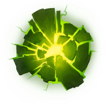
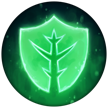
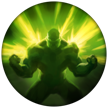
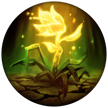

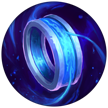
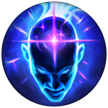
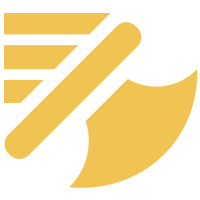







 Some abbreviations I use in this guide:
Some abbreviations I use in this guide:

















































































 Twisted Advance. Same thing if you have to run. The knockback and the slow can save your life.
Twisted Advance. Same thing if you have to run. The knockback and the slow can save your life.

 Twisted Advance's range and follow up with a flash! When you activate your W and they flash before you root them, you automatically follow up with them.
Twisted Advance's range and follow up with a flash! When you activate your W and they flash before you root them, you automatically follow up with them.

 Maokai you can win 1v2's. As long as you use those saplings.
Maokai you can win 1v2's. As long as you use those saplings.

 Nature's Grasp can be the difference between a kill or a failed gank.
Nature's Grasp can be the difference between a kill or a failed gank.










































































 Maokai is weak early but strong late. Early trades against a
Maokai is weak early but strong late. Early trades against a  Renekton who is strong early but weaker late will be hard for
Renekton who is strong early but weaker late will be hard for  Maokai. In return,
Maokai. In return,  Maokai outscales
Maokai outscales  Renekton and is better at later stages of the game.
Renekton and is better at later stages of the game.





























































































 883,993
883,993
 49
49
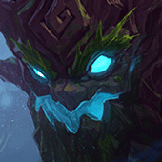







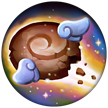









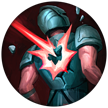
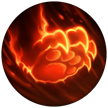

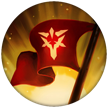
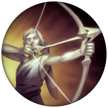
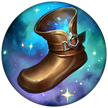

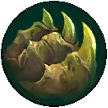














You must be logged in to comment. Please login or register.